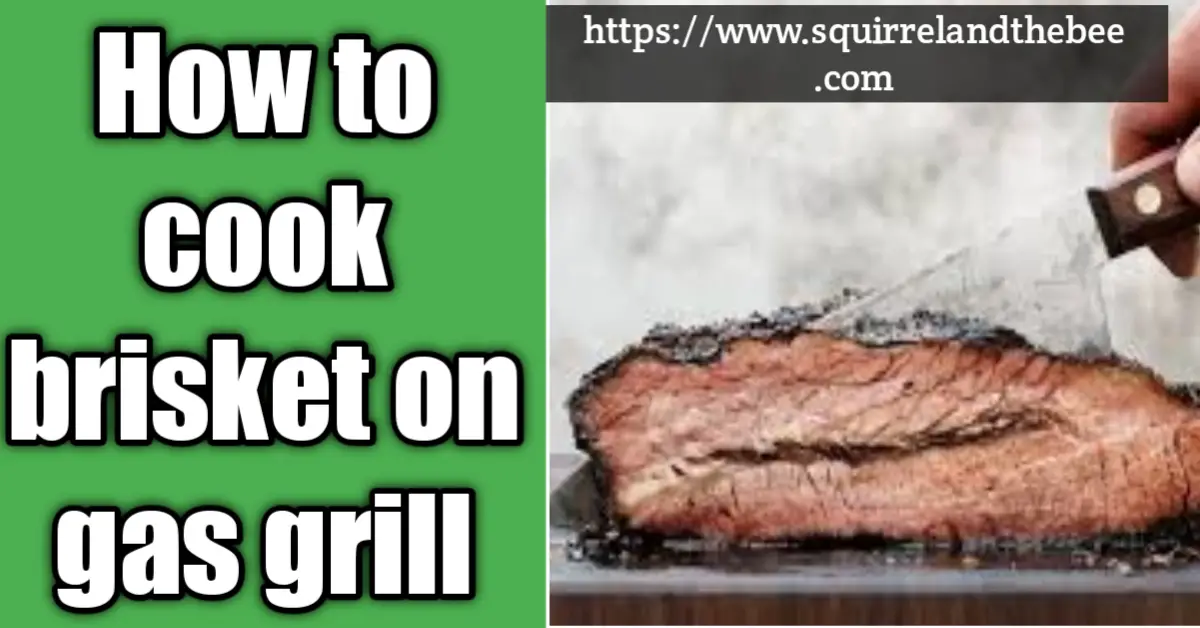How to cook brisket on gas grill
Cook grilled brisket that has been smoked low and slow on your gas grill in the backyard for moist, tender meat that has a crispy bark and a smokey flavor. Without a smoker, prepare traditional BBQ brisket.
Why this recipe is for you? (how to cook brisket on gas grill)
- I consider brisket to be the supreme form of barbeque. You may make a baby case back or pull pork butt, but smoked brisket is what I prefer.
- This meat will become your favorite because of the great bark, smoke, and soft meat. (brisket on gas grill then oven)
- The simple step-by-step visual instructions make it simple to grill and smoke brisket on your gas grill once you’ve set up your grill for low-and-slow cooking and smoking.
- On your home gas barbecue, you may prepare delicious brisket using this recipe. However, a charcoal or pellet barbecue is an option.
- Use the straightforward rub provided here, a dry rub you adore, a bespoke rub made from my BBQ Dry Rub recipe. (brisket on gas grill then oven)
How to cook brisket on gas grill
- Trim the fat cap and big chunks of fat from the brisket, if desired. Don’t strive for perfection.
- Apply your preferred BBQ rub or feel free to use mine. If feasible, wrap and place in the fridge overnight.
- Prepare the grill for smoking and low-and-slow cooking.
- With a drip pan and indirect heat, cook the brisket.
- When grilling, add the kind and amount of wood smoke you like. (brisket on gas grill then oven)
- 200° to 205° should be the interior temperature. My typical 5-pound point takes roughly 5 to 6 hours.
- Take off the grill, then cover with foil and a few clothes. (how to cook brisket on gas grill)
To serve, slice thinly against the grain.
How long to a brisket grill?
The average answer is 1 to 1 1/2 hours per pound, assuming a 250° grill. A good place to start for time management, although there are many other options. Weight, thickness, and grill temperature are the key determinants. (how to cook brisket on gas grill) (brisket on gas grill then oven)
When is the brisket done?
When the internal temperature of the brisket reaches 200°F–205°F, it is finished. I believe 190°F to be too low. 195°F to 200°F will make good slices. But it seems like competition smokers like 203°. 205°-210° is ok. However, temperatures beyond 210° are too high and will cause texture and moisture problems. (how to cook brisket on gas grill)
What temperature is best to use?
In the area of indirect heat, try to maintain a consistent grill surface temperature of 250°. The majority of smokers use 225°. More dryness problems arise as the temperature approaches 300°. (how to cook brisket on gas grill)
To do this successfully, you need a decent grill surface thermometer. Along with the necessary surface thermometer, a continuous read probe meat thermometer is an excellent idea. Thermoworks Therma Q Blue was what I used. (Since you are using this affiliate link, I will receive a small commission from your purchases. (brisket on gas grill then oven) Your purchase price is unaffected by this commission.) (how to cook brisket on gas grill)
TIP:
- Utilize the grill you have, but make sure it is large enough for the meat and the method of cooking.
- If you can regulate the temperature, you can use a charcoal or pellet barbecue. (how to cook brisket on gas grill)
- Make sure you have extra gas tanks, bags of wood pellets, or charcoal on hand to finish cooking. I grill with natural gas.
- The dry rub in this recipe is quite simple, yet it still functions and tastes great. However, for a more complex flavor profile, see my entire BBQ Dry Rub, which has countless variations. (brisket on gas grill without smoke)
- Whether the fat is on the inside or outside is hotly contested, but it makes no difference. Not the fat, but the melting connective tissue is where the moisture comes from. My friendly rival smokers concur. It makes no difference. To lessen the clutter and enhance the surface area for beautiful bark, I prefer to clip some. (how to cook brisket on gas grill)
About brisket:
A piece of meat from the lower chest wall is called beef brisket. There is a lot of connective tissue in the pectoral muscles of the brisket, both superficial and deep. Since the cow has no collar bones, its muscles support around 60% of its 1500-pound body weight. (how to cook brisket on gas grill) Whole briskets are often vacuum-packed for the producers and weigh 8 to 12 pounds, which is more meat than most “cooking for two” consumers want, unless they’re hosting a party.
Half-briskets are available at many grocery stores and consumer meat markets. The “point” and “flat” halves are there. Typically, the tip has one muscle layer, whereas the flat portion has two. (how to cook brisket on gas grill) (brisket on gas grill without smoke)
When the meat fibers begin to shrink at temperatures between 150°F and 160°F, “The Stall” occurs. Both beef and pork experience this, which lasts until the meat fibers start to relax at a temperature of roughly 180°F.
For most meats, it happens after “well done” temperature, so it is not a problem when cooking steaks, pork chops, or other comparable foods. However, as we cook the brisket or pig butt to temperatures above 200°, you might wish to take this into account. (how to cook brisket on gas grill)
As the cells contract, the water in the meat fibers will be compelled out and forced to the surface. As you continue to cook, the water will evaporate off the top. The cooking process will “stall” due to evaporation’s energy consumption. Depending on the amount of meat and other elements, this stall may continue for several hours. For a large entire brisket, it can take up to six hours. (brisket on gas grill without smoke)
The Texas crutch:
The “Texas Crutch” is employed in opposition to “the stall.” (how to cook brisket on gas grill) To stop evaporation, the meat is wrapped securely. 90% of smokers who compete do so. But keep in mind that they are preparing sizable entire briskets.
A “mini-environment” next to the meat is produced by tightly wrapping; this environment quickly reaches 100% relative humidity and stops further evaporation. (how to cook brisket on gas grill) (how long to grill beef brisket)
The meat fibre will keep shrinking and expelling water, but it cannot evaporate, chilling your meat and adding more time to the cooking process.
Pros and cons of Texas Crutch: (how to cook brisket on gas grill)
Pros:
- Time is the biggest benefit. Cooking time can be reduced by hours, especially when using larger slices.
- Moisture. The meat’s moisture may be preserved as a result. The moisture can re-absorb into the cells as the beef approaches the 180° range and the cells relax. This has a modest impact. (how to cook brisket on gas grill)
- You can manage smoke exposure if you’re a smoker. (how long to grill beef brisket)
Cons:
The primary drawback is that water might damage your bark. Your formerly hard-earned crisp bark softens. This can be somewhat (but not entirely) overcome. See the section after that. (how to cook brisket on gas grill)
the bothersomeness and labor. Yes, some will whine about anything.
Your grill’s temperature drops. I put a lot of effort into maintaining my temperature. (how long to grill beef brisket) I make an effort to keep my hands away and the hood closed. (how to cook brisket on gas grill)
The technique of Texas crutch:
- I don’t want to purchase hundreds of feet of butcher paper, even though some people will use it (the pink variety, not the white wax-coated variety). On the barking issue, it might be a little better. Since we all have heavy-duty aluminum foil, most people use that.
- When the meat temperature “stalls,” you should do this between 150 and 160 degrees. The bark should also be “set up,” or not mushy, and be a dark reddish-black color. (how to cook brisket on gas grill)
- Choose a spot near the grill and prepare two sizable pieces of foil for double wrapping.
- Pick up your grilled meat right away. Do not simply open the lid completely and leave it that way. Open as far as necessary, then quickly close. (how long to grill beef brisket)
- Wrap firmly. TIGHT and crimp the seams and ends, I’ll repeat that. It’s best if your miniature world is as little as possible.
- Your meat thermometer should be securely compressed. To perform this correctly, you must have a continuous read thermometer.
- Return to the grill until you achieve your desired temperature, which for me is often 200° to 205°.
- Unwrap at this stage and continue cooking for an additional 30 minutes if you want to improve your bark. (how to cook brisket on gas grill)




